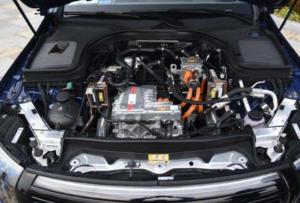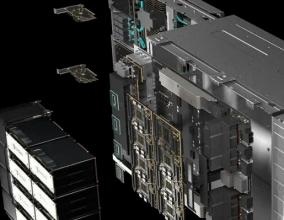过度到42V电池无皮带引擎
来源: 作者: 时间:2007-03-08 15:06
摘要:为了满足增加功率的需求,汽车制造商把汽车电池的电压从目前的14V增加到大约42V.40年前汽车制造商把电池电压从6V系统增加到14V,主要是出于功率的考卷.从那以后,汽车的电功率消耗增加了50%以上.下一代的汽车将有更多的电子设备而消耗更多的功率,超出14V所能提供的3KW的极限.而42V系统将会提供大约8KW的功率,从而能满足更高功率的需求.此外,42V系统还有其它的好处……
Making the transition to 42V electrically-powered 'beltless engines'
If it comes, transition to 42V electrically-powered beltless engines
will be difficult, but presents opportunities to engineers
By Qi Wang, Keithley Instruments
To meet increasing electrical power demands, automakers are moving
to increase vehicle battery voltage from today's 14V to approximately
42V. It's been more than 40 years since car makers switched from
the standard 6V system - a change triggered by similar power considerations.
Since then, vehicle electrical power consumption has increased by
more than 50 percent. Next-generation cars will have even more electronics
and require a power source with an output of more than 3kW, the
limit of today's 14V system. A 42V system will deliver around 8kW
and allow better management of the higher power requirements.
A 42V system sets the stage for advanced technologies that will
allow a switch from mechanical belt-driven systems to electrically-powered
ones. Possibilities
include electric power steering, electromechanical brakes, electrical
HVAC systems, electromagnetic valve trains, integrated starter-generators
and electronic ride control systems.
The so-called "beltless engine" of the future will be
another reason for lower weight packaging (because accessories can
be located outside the engine compartment), leading to higher efficiency
that improves gas mileage and reduces emissions.
Before 42V systems can be adopted widely, many engineering problems
must be addressed, including the engine/electrical system architecture
and a migration strategy (dual 14/42V systems vs. straight 42V systems).
Short-term challenges associated with dual voltage systems include
more wiring, extra weight and added complexity.
Regardless of migration path, suppliers need time to develop new
components and a part identification system that distinguishes between
14V and 42V parts.
 Figure 1. The test system includes voltage and current sources integrated with measuring instruments and a switching matrix.
相关文章
资讯排行榜
华强资讯微信号
关注方法: |






